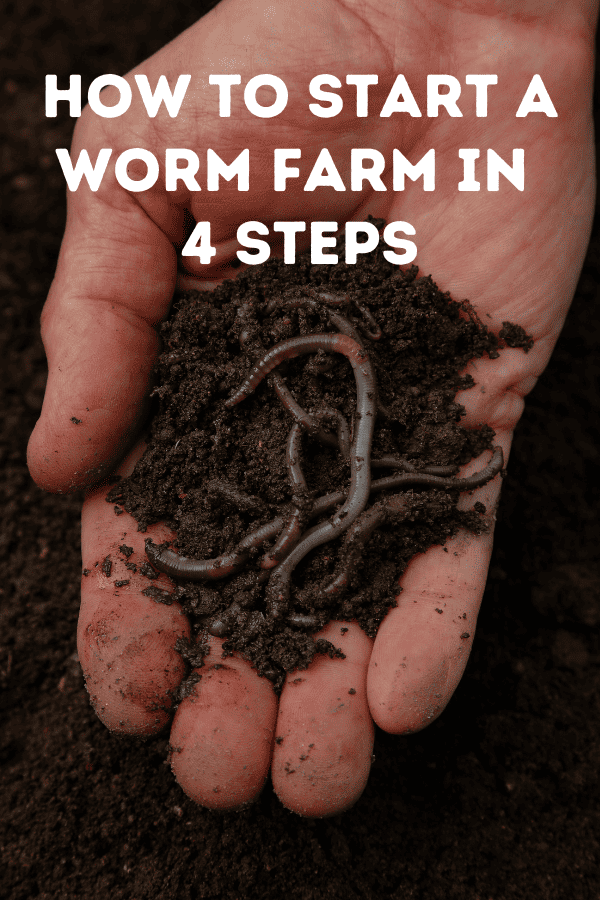
Are you interested in starting a worm farm? It's a great way to reduce the amount of waste you're throwing away to landfill and create homemade soil conditioners for your garden. In fact, did you know that the average Aussie bin is made up of up to forty percent food waste? Instead of tossing that food in the trash, why not get some new down-to-earth friends who'll appreciate the food more than the tip will?
Sustainable Soil: How to Start a Worm Farm for Your Garden
Getting started with worm farming may seem daunting, but it's actually quite simple. There are just four steps to follow, and we'll guide you through each one.
Step one is sourcing a worm farm and some composting worms. When figuring out how big your worm farm needs to be and how many worms you need, think about how much food you throw away per day. Worms can eat about half their body weight worth of food, so if you throw away two apple cores and a carrot, you'll need a certain number of worms to consume it. If you're unsure about how much food you throw away, just buy a large box of worms to get you started. Choose a well-constructed worm farm so pests can't get in; remember, it's not a pest farm, it's a worm farm.
Next, set up your worm farm. What materials do you need? Grab a pair of gloves and an apron so you don't get too dirty. Then, source two sheets of newspaper, a hessian cloth that is as wide and as long as your worm farm, a large bowl or bucket, your worm farm, worms, and the coco fiber brick that came with the kit. Place the coco fiber brick in the bowl and cover with water, then wait two hours for it to expand.
While you're waiting for your coco fiber brick to expand, move your worm farm into a cool, dark, dry area away from the hot sun. Place your newspaper on the base of your first working tray. Once your coco fiber brick has expanded, grab it out of the bowl and layer it over the newspaper; it should still be quite wet. Add the worms on top of the coco fiber and newspaper, keeping any bedding that came with them, then cover with the worm blanket. A worm blanket can be made out of any old fabric; today, we're using hessian. And now, let your worms settle in for a week. Then, dig a shallow trench on top of the bedding, place a handful of food scraps, and cover with the bedding. Replace the blanket and the lid, and voila, you're all set up. You only need one tray until it fills up. To learn how to add other trays or how to rotate them, visit greenvillages.com.au.
Now that your worms are settled and happy in their new home, let's find out the best way to feed them. Make sure you feed them regularly. If you feed them huge amounts every week or so, the worms can't get through it fast enough, and the food waste goes sour and starts to smell. When you lift the blanket and there are still lots of food scraps remaining, move the food to compost or rubbish to prevent overfeeding or smell. To add more food, dig a new trench next to the previous one. Continue this until you reach the end of the farm, then jump back to where you started.
There are a lot of different food scraps in the average Aussie kitchen. Here is a list of some you can feed them: raw and cooked food, vegetable scraps, coffee grinds, tea bags, and little bits of paper and cardboard. Here are some you should try and avoid: dairy, bread, meat, and eggshells (but you can if you crush them up). Here are some you just can't put in: onions, garlic, uncooked potato skins, and citrus peel. It's important to tear the food up into small pieces because worms have small mouths.
Finally, make sure to check the water levels. The bedding and food scraps should have the same level of moisture as a wet kitchen sponge. If worms get too dry, they stop moving and eating.
But what if your worm farm isn't going so well? Don't worry, we've got some troubleshooting tips for you. If your worms aren't eating everything, it's probably because you're feeding them too much. Before you put in more food, check that there aren't too many food scraps remaining. Remember, worms can only eat half their body weight each day. Maybe you need a bigger farm, or maybe you should feed them less.
If flies are turning up uninvited, make sure you cover the food with the worm blanket, and then they'll understand they're crashing a party. Also, ensure that the worm farm is tightly closed with no cracks; this will keep other pests out too. And if your worm farm stinks, it's probably because you're not covering it properly. Make sure you bury it in a trench, cover it with the hessian blanket, and ensure the lid is tightly closed. Remember, we said don't feed them meat, bread, or dairy? It's not because they're gluten-intolerant lacto-vegetarians; it's because it makes for a stinky farm.
Starting a worm farm may seem daunting, but with just a few simple steps, you can reduce your waste and create a sustainable source of soil conditioners for your garden. By following these tips and tricks, you'll be well on your way to becoming a successful worm farmer in no time. Happy worm farming!
Embed this infographic on your site.

